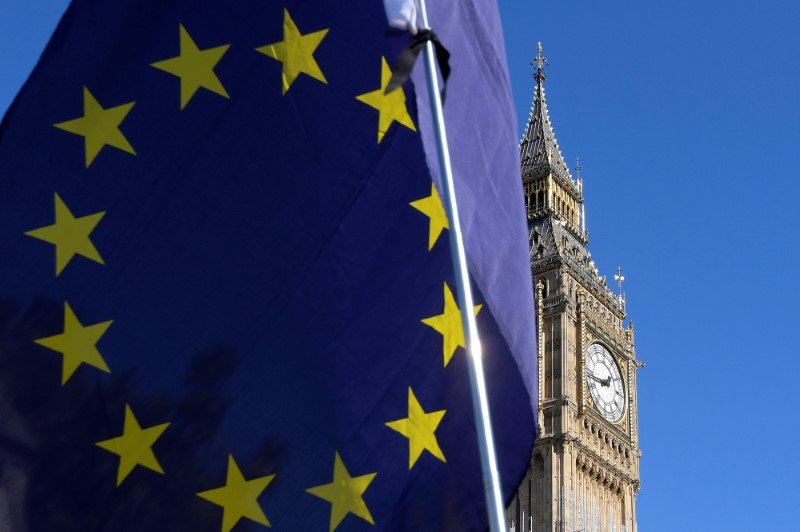 © Reuters. An EU flag is waved near the Houses of Parliament in central London
© Reuters. An EU flag is waved near the Houses of Parliament in central LondonBRUSSELS (Reuters) – The European Union minus Britain will hold its first internal talks on Wednesday on how it envisages future relations with London and what sort of transition period there will be after Brexit in March 2019.
Brussels envoys from the 27 EU states meet in the afternoon for the first time since the bloc’s leaders last week denied Prime Minister Theresa May’s request to start talks on post-Brexit trade arrangements just yet.
They have softened that blow, however, by offering positive language and assurances that the bloc would be ready to launch the second phase of talks in December should London improve its divorce offer by then.
To be ready for that, the 27 must first arrive at their own common stance. Wednesday marks the start of the process for agreeing on that.
Officials and diplomats said the envoys would be briefed by a senior EU official on how to organise their work. The floor will then be open to member states to share their initial thoughts, including what sort of preparations they have already made in their capitals.
“It will be the first opportunity to look at how to take forward (the summit) mandate to start the internal discussions at 27 on possible transitional arrangements and the framework for the future relations,” said an EU official.
While the 27 are contemplating the future relationship – or “scoping” it, as Brussels has been calling it – there will also be a transition period between Brexit and the moment the new arrangement takes effect.
Both sides currently expect the transition to last around two years. The EU’s chief Brexit negotiator, Michel Barnier, on Tuesday said that would mostly mean preserving the status quo.
“This can buy an extra two years for talks abut a future agreement,” said a senior EU official. “The two sides are relatively close on transition.”
CANADA +
Businesses in the UK as well as in Europe have been concerned by the slow progress in Brexit talks. Some have already started moving staff and operations out of Britain to hedge their bets. More could follow should no more clarity be given by the two negotiating sides by the end of the year.
Barnier has also said Britain could not count on a bespoke trade deal later on, with EU officials and diplomats thinking about something less ambitious than the bloc’s arrangement with Norway but stronger than its new trade deal with Canada.
Non-EU Norway currently pays for access to the bloc’s single market of 500 million people, though it is not part of the same customs union. In exchange, it is also obliged to allow the free movement of people in and out of the EU.
Britain wants to leave both the EU’s internal market and the customs union, meaning a “Canada +” scenario is more likely, according to sources in Brussels.
The European bloc’s trade deal with Canada, its most ambitious arrangement yet, has just taken effect. Under the deal Canada can still pursue its own bilateral trade agreements elsewhere in the world.
Fusion Media or anyone involved with Fusion Media will not accept any liability for loss or damage as a result of reliance on the information including data, quotes, charts and buy/sell signals contained within this website. Please be fully informed regarding the risks and costs associated with trading the financial markets, it is one of the riskiest investment forms possible.
Source: Investing.com



























